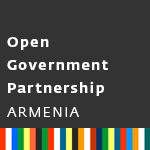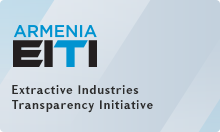Thursday, 21 July 2005
Today a Prime Minister A. Margaryan-chaired meeting of RA Anti-Corruption Council has been held at the Office of Government. The Council has heard the report made by Chairman of CBA Mr. Tigran Sargsyan on the implementation of the CBA-related component of GOA's anti-corruption strategy and associated action plan, including the progress made in the discharge of Armenia's commitments assumed under international conventions and agreements regarding the activities of the CBA, as well as the report made by Chairman of State Commission on Economic Competitivity Protection Mr. Ashot Shahnazaryan on the implementation of Commission-related component of GOA's anti-corruption strategy and associated action plan, as well as on the performance of Armenia's commitments assumed under international conventions and agreements in the relevant field.
The Council has also heard the report presented by Minister of Justice Mr. David Haroutunyan on the problems faced on the way to streamlining the monitoring and control system.
With reference to agenda item one, the Chairman of the Central Bank has reported that in accordance with GOA decision No. 1522-N of November 6, 2003 "On Approval of Anti-Corruption Strategy and Relevant Action Plan," the Central Bank had to draft the laws on the fight against money laundering, regulation and control of forex flows, the system of mutual settlements, as well as approve the package of official guidelines for the CBA-enacted rules and regulations and pass a decision voted by the Board on the methodology and criteria for credit risk assessment. According to the report, a number of measures had been identified in order of priority and implemented by the Central Bank based on corruption risk assessment criteria. These activities were detailed in the information paper delivered to the Council by the Chairman of CBA.
With reference to the next agenda item, the Chairman of the State Commission on Economic Competitivity Protection has reported that the anti-corruption strategy was being carried out in two directions, namely: the strengthening of guarantees for countering corruption in Commission activities and the detection and elimination of corruption risks by means of look-overs performed to ascertain the public and local self-government entities-passed legal acts' conformity to RA legislation on the promotion of economic competitivity. In coordinating the above activities, the Commission had proceeded from the national anti-corruption strategy and action plan. Commission Chairman Mr. Ashot Shahnazaryan, too, had submitted a reference paper on the measures aimed at ensuring transparency in the legislative and regulatory fields, eliminating conflicts between laws and other legal acts and opportunities for corruption, building specialized links between business and public services, narrowing the scope of activities subject to licensing, giving State procurement activities the required publicity and transparency etc. With reference to the regulatory framework of the supervisory activities, the Commission recommended to conduct an analysis and deliver information on the legal grounds established for the controls performed by State bodies, as well as the areas controlled, which was supposed to help develop efficacious mechanisms for the streamlining of the area at hand. It was decided that at the next meeting the Commission would review the reports on the anti-corruption measures taken by tax and customs authorities.
In order to give wider publicity to the reports delivered, the Prime Minister instructed to place them on the government's official website as it had already been the case with the report on the action implemented by public prosecution authorities in the framework of the anti-corruption strategy.






